Patagonia Descensionist Jacket and Pants
Reviewer: 6’0”, 175 lbs
Descensionist Jacket
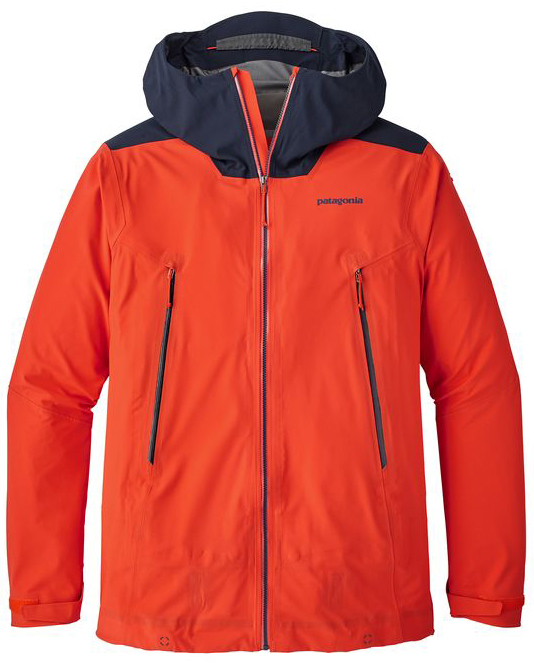
Size Tested: Large
Blister’s Measured Weight: 673 g
Blister’s Measured Front Zipper Length: 79 cm
Materials: 3-layer, 4.9-oz 50-denier 86% nylon/14% polyester plain weave with mechanical stretch and a DWR
Stated Features:
- Helmet-compatible, 2-way-adjustable fixed hood with laminated visor for optimal visibility in bad conditions
- Cohaesive® embedded cord-lock system in hood and hem provides quick and easy adjustment
- Watertight, coated zippers with slim zip installation reduce bulk and weight
- Vislon® center-front and chest pocket zips are durable and easy to use
- Adjustable powder skirt can be cinched for a tight seal or lies flat when not in use.
- A webbing loop at center back connects to any Patagonia Snow pants
- Internal stash pocket
- Concealed RECCO® reflector
Pockets:
- Zippered RF Pocket on Sleeve
- Interior drop-in Goggle Pocket
- Interior zipper chest pocket
- 2 mesh-backed, zippered skin pockets
MSRP: $449
Descensionist Pant
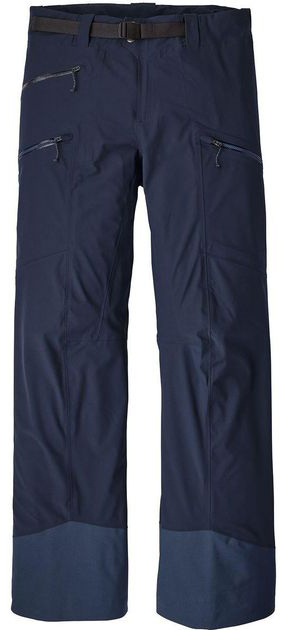
Size Tested: Large
Blister’s Measured Weight: 534 grams
Materials: 3-layer, 4.9-oz 50-denier 86% nylon/14% polyester plain weave with mechanical stretch and a DWR
Stated Features:
- Soft self-fabric lining repels moisture
- Grown-on belt loops and built-in belt
- Two-snap closure and zip fly
- Webbing loop on rear yoke attaches pants to the powder skirt on any Patagonia® Snow jacket
- Vents at back of thigh have watertight, coated zippers with slim zip installation to reduce bulk and weight
- Articulated patterning complements generous stretch for mobility while stepping or sliding
- Two front pockets and two large thigh pockets with watertight zippers
- Gaiters seal out snow; tough scuff guards protect inside of leg and bottom hem
- Concealed RECCO® reflector
Pockets:
- 2 zippered hand pockets
- 1 zippered beacon pocket
MSRP: $379
Days Tested: 30+
Test Locations: Grand Targhee, Grand Teton National Park, Togwotee Pass, & Teton Pass, WY; Galena Peak, ID
Intro
Patagonia’s aptly named “Descensionist” kit was introduced this year as a new “backcountry freeride” outerwear option. I spent most of last winter skiing in the Descensionist Jacket and Pants, and came away very impressed; I skied in this kit far more than any other outerwear last year, and it performed so well that it earned a “Best Of” award in our Buyer’s Guide.
So what is the Descensionist meant to do, and why do I think it does it so well? Here’s what Patagonia says about the Descensionist kit: “outstanding breathability in a waterproof shell, the Descensionist…deliver(s) up and down performance for the freeride backcountry specialist.”
While we have a tendency to be critical of marketing copy around here, that’s a very succinct but accurate summation of what the Descensionist actually is. It’s meant to be worn by people going up and downhill in the backcountry who aren’t just focused on ski-mountaineering or climbing — they want to freeride. As an inbounds jibber who loves long tours and big days, but who still likes to jump off of things and play in the backcountry, the Descensionist fits my needs perfectly, and those same characteristics make it a great choice for a wide range of backcountry skiers looking for versatile outerwear.
Fit
Patagonia calls the Descensionist’s fit “regular,” which isn’t all that useful. From my experience, the Descensionist Jacket and Pants fit very similarly to the Patagonia Powslayer, so if you like that kit and are looking for something more touring-focused, the Descensionist is a good option. It’s not as long and baggy as something inbounds-focused like the Armada Crest Pant and Sherwin Jacket, but it’s cut much more generously than the Trew Wander Jacket and Roam Bib.
I wear a Large in pretty much everything, and the Large Descensionist fits me well. The sleeves are long enough that they don’t pull up above my gloves and expose my wrists, even when I’m tomahawking, and while the pants are a little generous for my 32” waist, the built-in belt cinches them down nicely.

The Descensionist jacket and pants deliver a happy medium as far as fit goes. I think most people will be happy with them — not overly fitted, nor overly baggy. However, if you’re looking for very slim ski mountaineering fit, look elsewhere.
Materials
Patagonia chose to use a proprietary fabric rather than a name brand membrane like Polartec NeoShell or Gore-Tex for the Descensionist. Instead, they use their own 3-layer, 4.9-oz 50-denier 86% nylon/14% polyester plain weave with mechanical stretch and a DWR. Initially, that sounded risky to me. I appreciate the peace of mind that accompanies name brand fabrics like Gore Tex and NeoShell, and in my past experience, proprietary fabrics can be very hit-or-miss.
Not so with the Descensionist. Though they don’t list any specs on the site, after talking with Patagonia, they confirmed that the Descensionist fabric has a 10,000 mm waterproof rating before their “Killer Wash” test, and 2 CFM’s of breathability. Waterproofing and breathability specs can often be confusing and misleading, and you can learn more about them in our Outerwear 101 article, but for reference, 10,000 mm is considered the standard for fabrics to be considered “waterproof” (and 10,000 mm is the same rating as Polartec NeoShell). 2 CFM means that the fabric will let through 2 cubic feet of air in one minute under standard pressure conditions (usually simulating 30 mph wind). The fact that the Descensionist lets any air through at all is significant, as air permeable fabrics like those used in the Descensionist generally offer a significant improvement over traditional waterproof breathable’s in terms of breathability. Check out our Outerwear 201 article for more info on air permeable fabrics.
Specs are useful in getting an idea of how the fabric should behave, but, performance during actual use is often more useful, and I’ve been impressed by the Descensionist’s performance both in terms of waterproofing and breathability. I haven’t been able to wet out the Descensionist, even on a day where the weather alternated between sleet and rain. I’ve been surprised that it hasn’t even soaked through the DWR in pressured areas, like under my pack straps.
The Descensionist kit also breathes better than any Gore, NeoShell, or Dermizax shell I’ve worn — significantly better. I can skin with the jacket on much longer than I have been able to in any other outerwear combination without overheating and getting sweaty. And the Descensionist’s soft inside backer means it’s comfortable to wear even just over a T-shirt.
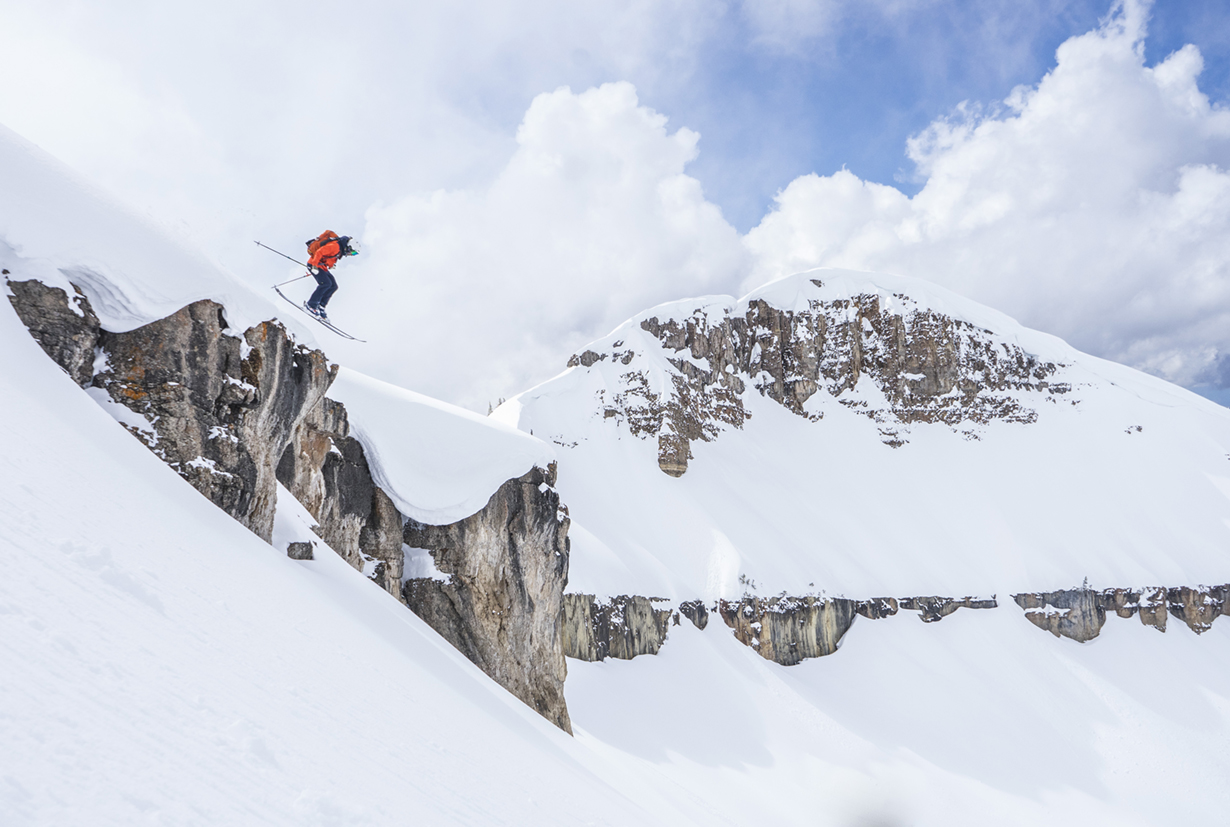
The mechanical stretch of the shell material also helps with comfort — the kit moves easily with my body and I’ve never found myself fighting it, even on awkward moves to make icy kick turns. This material is very, very comfortable.
I have found that the Descensionist’s fabric doesn’t block the wind as well as Gore or NeoShell fabrics, but that’s to be expected with its level of breathability. More wind comes through the Descensionist than even some fabrics without membranes like the material of the Strafe Recon. So, if complete windproofing is a priority for you, you might want to look elsewhere, but if you don’t need a fully windproof shell and appreciate the significant increase in breathability, the Descensionist is a great option.
Jacket Pockets
The Descensionist Jacket has a very effective pocket layout. The small shoulder pocket is perfect for a RFID pass, or my wallet when I’m touring. The two chest pockets easily fit even large climbing skins (184 cm x 116 mm), are positioned out of the way of pack straps, and are mesh backed, so they double as vents. The inside zipper pocket holds a phone, wallet, or food, and the inside stuff pocket fits goggles or extra gloves. There isn’t a whole lot of wasted pocket capacity, which makes sense in a backcountry-oriented shell.
Pant Pockets
The pants have a very simple three-pocket layout. There are the two generous zippered hand pockets, and a lower-right thigh beacon pocket. The beacon pocket has an internal sleeve to keep beacons from jostling around, but is missing a D ring to clip the leash to, which is worth noting. I’ve found that this pocket is well positioned so that I don’t notice my beacon while skiing or touring.
Vents
The jacket does not have any pit vents, which I initially thought would be frustrating. However, it breathes so well that I rarely find myself needing to vent, and when I do, the chest pockets and their mesh backing have proven to be easier to access than traditional pit vents while wearing a pack
The pant has two large outer-thigh vents that are easier to open and close with gloves than most others that I’ve used. They don’t have any mesh lining, so snow can get in, but they also open wider than vents that do have mesh linings
Other Features
The jacket’s powder skirt is rather light and minimalist, and doesn’t zip off, but it’s easy to use and integrates with the pants via a snap on the back of the waist. The hood works well with or without a helmet, and the single adjustment cord is easy to use, even with gloves.
The built-in belt on the pants functions very well. Usually, I have to use an Arcade belt with snow pants, but I haven’t had to with the Descensionist. The one key feature that some people might miss is an interior ankle gaiter on the pants. There is no internal gaiter, instead there is a draw cord that allows you to cinch the pants down around your boots.
I haven’t missed this gaiter as much as I thought I would. I thought I’d end up with a lot of snow in my boots when skinning or skiing, but so far it’s been minimal, and I’ve only needed to cinch the cuff down when post-holing in deep snow.
Durability + Patagonia’s Worn Wear Program
I skied 30+ days in the Descensionist kit last year, and came away impressed with its durability. I haven’t noticed any wear on the face fabric, the waterproofing still works well, and there is minimal wear on the cuffs of the pants (and no cuts that go all the way through the material). I did manage to put the blade of my Whippet through the shell of the beacon pocket while touring, but I wouldn’t expect any pant to withstand that sort of impact.
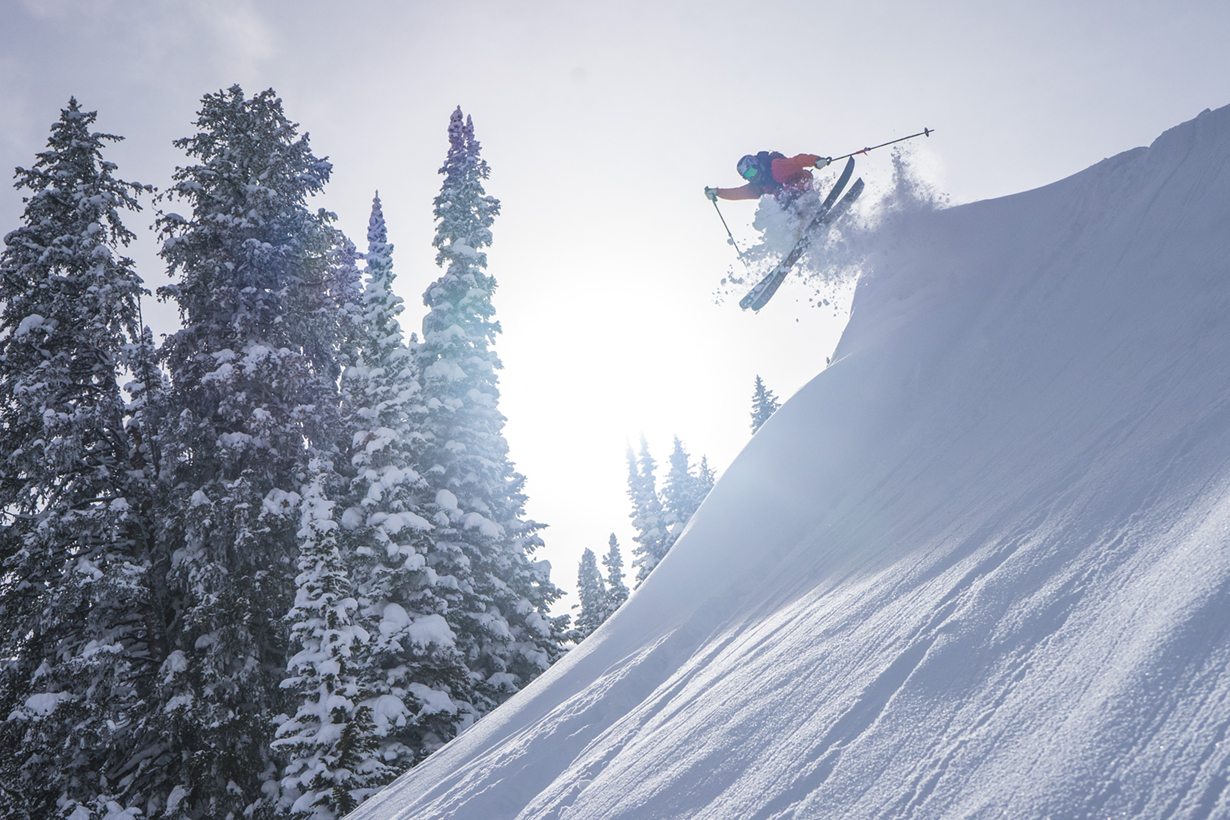
Patagonia’s Worn Wear program also makes it easy to get your gear repaired if you do manage to damage it, and they’ve just announced a new Worn Wear Mountain Party tour for the 2017/2018 season. They’ll be visiting several ski towns throughout the U.S. and Canada and educating people on how to patch tears, fix zippers, and re-waterproof gear, and all the donations from the tour will go to Protect Our Winters. Check out the dates and locations below, and you can learn more about the Worn Wear program here.
- Jan 5-7: Patagonia @ Squaw, CA
- Jan 19-21: Jackson Hole, WY + local retailers
- Jan 26-28: Sun Valley, ID + local retailers
- Feb 1-4: Silver Mountain, ID + local retail
- Feb 8-11: Banked Slalom, WA + local retailers
- Feb 16-18: Patagonia @ Whistler, Canada
- April 14-15: Mt Bachelor – Gerry Lopez Big Wave Challenge
Who’s it For?
Patagonia calls the Descensionist a backcountry freeride kit, which is perhaps a little ambiguous, but I think that phrase does sum it up perfectly.
This wouldn’t be my first choice for strictly inbounds days — it’s not as fully-featured as most inbounds kits, and I’d prefer Gore Pro or C-knit if I’m only going to be riding lifts. And the Descensionist wouldn’t be my first choice for ski mountaineering — it fits looser than I’d like in a kit primarily used with crampons, axes, and other pointy things.
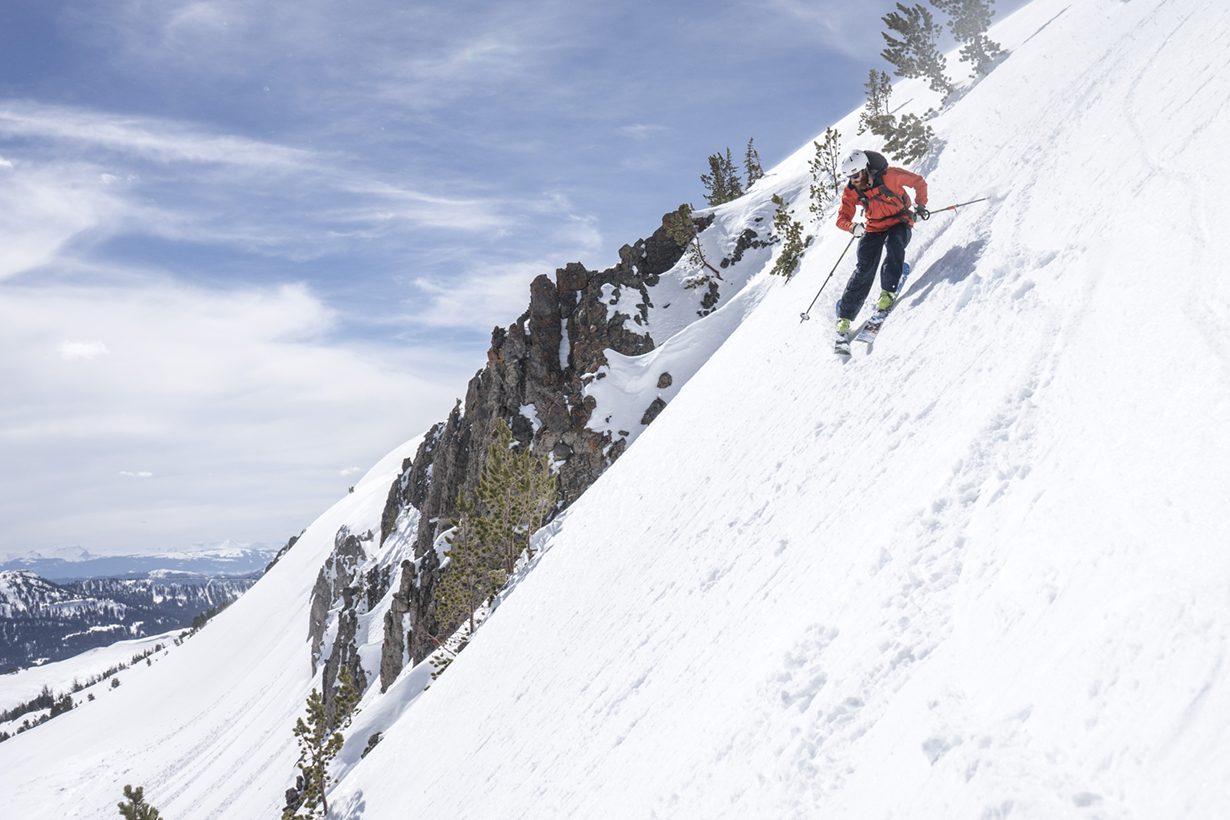
But for everything in between? This is my go-to. The Descensionist works fine on inbounds days, and it really shines on days where I’m touring out of the resort — it’s breathable enough that it’s a pleasure to skin in, but it withstands the elements on long lift rides. It’s also perfect for big backcountry powder days where I appreciate the fact that it breathes so well, without being cut like a slim mountaineering kit, which is a hard combination to find, in my experience. And I don’t mind the Descensionist on big spring days with lots of vert — it breathes well and isn’t overly baggy.
So if you’re looking for one kit to do a little bit of everything in the backcountry, this is our top choice. And if you like the Patagonia Powslayer but want something a little more touring-oriented, the Descensionist is the way to go.
Bottom Line
There are a lot of slim-cut touring options out there designed for the “running-and-climbing-up-mountains” crowd. And there are a lot of more generously-cut inbound options that don’t breathe very well, and don’t have a pocket layout optimized for touring. Patagonia’s new Descensionist kit finds a happy medium between these two categories and features the best of both worlds. It’s got a more generous cut similar to an inbounds kit, with the breathability and feature set of touring outerwear. So if you’re looking for one set of outerwear to do it all in the backcountry, the Patagonia Descensionist is a very strong option.

“…And the Descensionist wouldn’t be my first choice for ski mountaineering — it fits looser than I’d like in a kit primarily used with crampons, axes, and other pointy things.”
That might actually make it a nice option for people with a stocky or rotund build, who want the technical fabric and more minimal design for ski touring/mountaineering, but have a hard time with the slim fit of most of those style garments.
On the other hand, for bean poles like me(6’5″, 32″ waist) it does rule it out, despite nice fabric and design.
I am just saying that it sounds like they did a good job wi the fit for intended use for you, but it’s important to remember that everyone’s body type is different, which in this case might actually help broaden it potentiall.
I picked up this jacket a couple weeks ago and have also been very impressed. I had a Patagonia Untracked Jacket before that I absolutely love and recommend, but this new jacket is so lightweight and breathable. The fit is great. Not baggy, but not tight. It’s super comfortable too without getting that crinkly noise and feel of goretex. I was also weary of no pit zips, but I think the reviewer is correct that they probably aren’t needed, but I haven’t yet gone on a big tour with the jacket. The finish quality around the cuffs and other stitching is really good. It’s a really cool material that feels like a softshell, but has the performance of a hardshell, although I have not yet had it in super windy conditions.
For reference, I’m 5’9″, 145 lbs and went with the small. I probably could have gone with a medium for a little more loose fit for inbounds, but the small is perfect for touring.
I’ve been seeing this jacket on sale but also heard (on your podcast) that a new line is coming out next year. Is it worth maybe waiting for the Snowdrifter or should I pull the trigger on this one at a good price point?
Thanks!